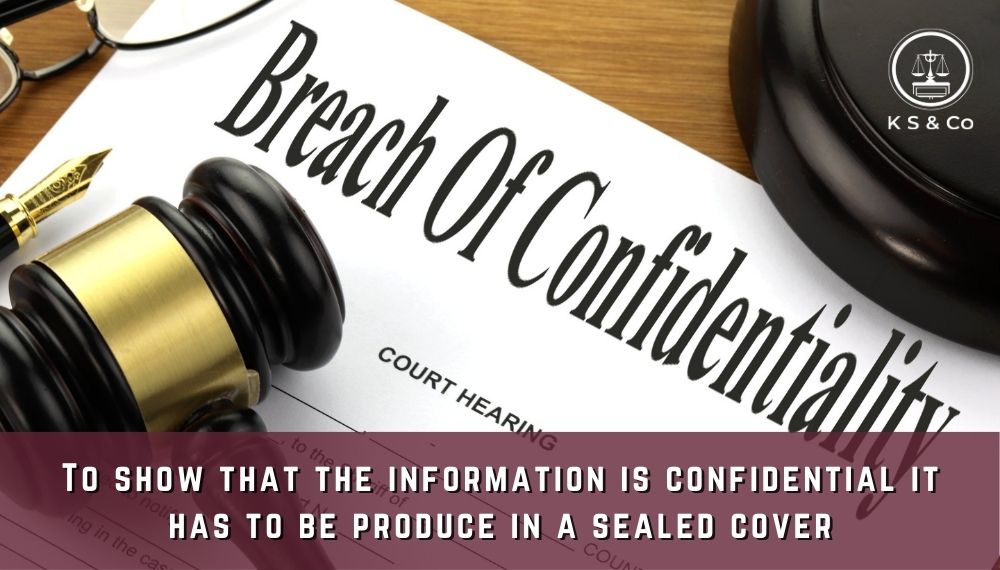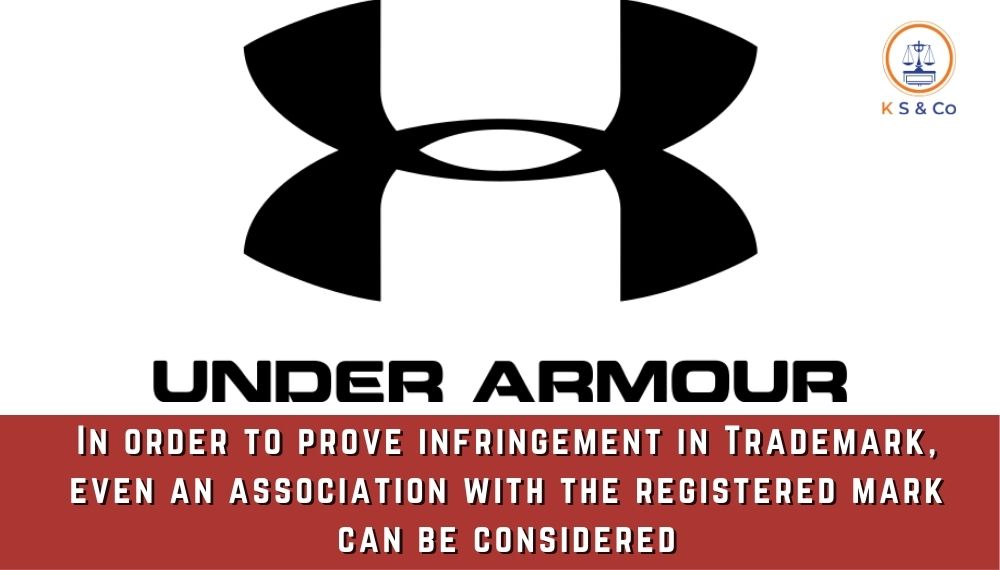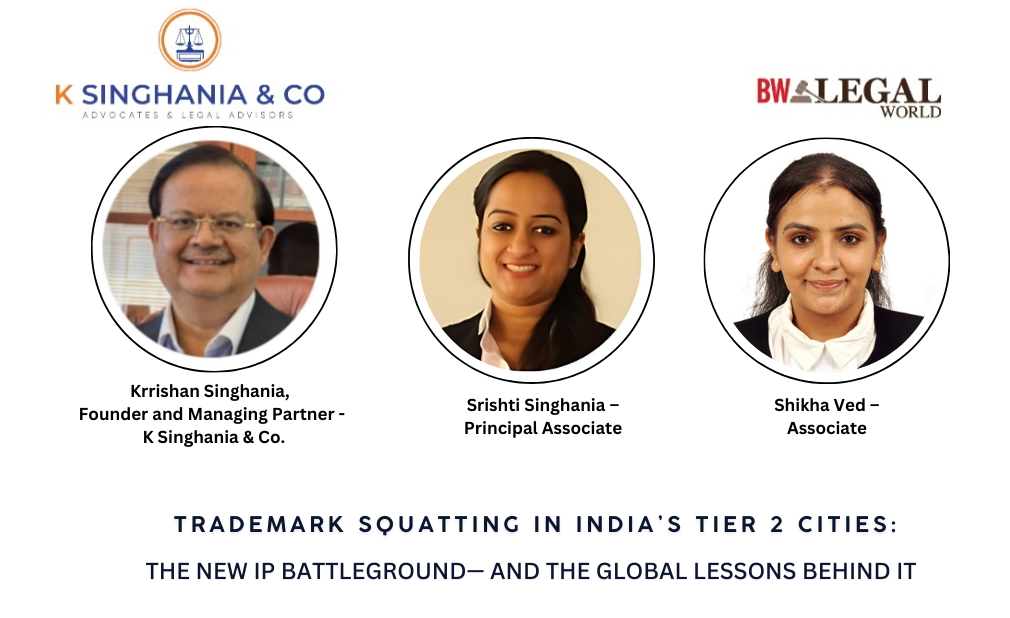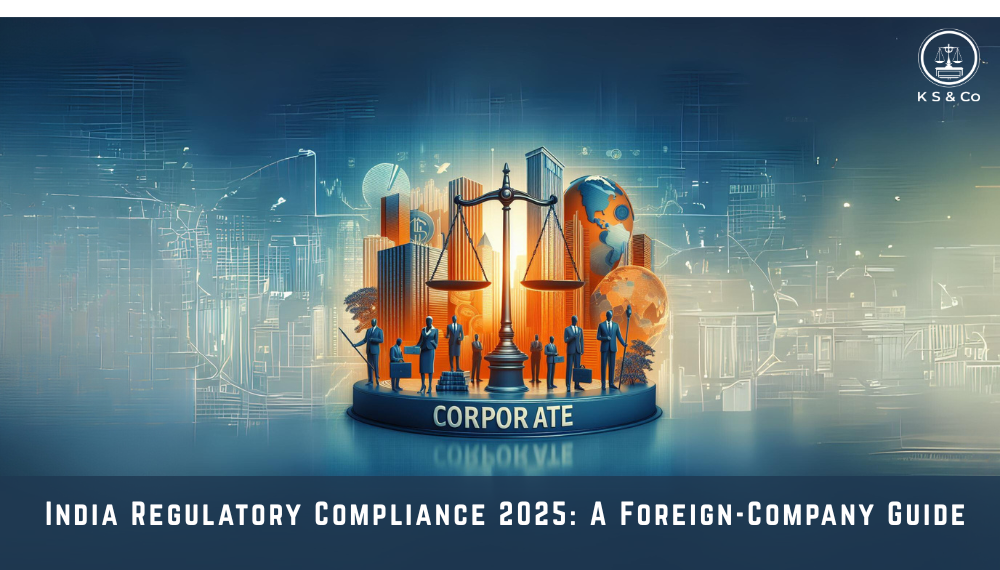CASE TITLE –
Indian Performing Right Society Limited vs. Rajasthan Patrika Pvt. Ltd. and Indian Performing Right Society Limited vs. Music Broadcast Limited (28.04.2023 – BOMHC): MANU/MH/1671/2023
FACTS OF THE CASE –
The Bombay High Court has been approached by the Indian Performing Rights Society Limited (IPRS) to seek interim reliefs against the defendants, primarily on the ground that amendments brought into effect from 21.06.2012 in the Copyright Act, 1957, have completely changed the legal framework concerning the rights of authors of original literary, dramatic, musical and artistic works.
IPRS, which represents these authors of original work who had been denied earlier, in the Supreme Court case of Indian Performing Rights Society (IPRS) Vs. Eastern Indian Motion Pictures Association and others (1997) 2 SCC 820, their rightful claim on royalties on each occasion their original work was being exploited.
It was thus held by the Supreme Court that once the author of the original literary or musical work assigned the same to a producer of a cinematograph film, such author of original works could no longer claim any further right from such producer when the cinematograph film was communicated to the public.
Based on the amendments, which have been made to the Copyright Act 2012, the Plaintiff in the present case has asked the Bombay High Court to revisit the position of the copyright laws with respect to the original author’s rights to claim royalties, when their sound recording is communicated to the public by the defendants. It is relevant to mention here that the defendants are companies engaged in the business of operating FM Radio Broadcast Channels.
ARGUMENTS BY THE PARTIES –
Contentions of the Plaintiff
The Plaintiffs argued that the substantial amendments brought about in the Copyright Act were with the intention to protect the rights of the authors of the original literary and musical works i.e. the underlying works. They further contended that amendments had the effect of reversing the prevailing position of law under the unamended Copyright Act, as interpreted by the Supreme Court in the case of IPRS Vs. Eastern Indian Motion Pictures Association and others (supra) and numerous subsequent judgements. Therefore, they submitted, IPRS being a copyright society is protecting the interests of the authors of the original work who were earlier deprived of their rights, but are now entitled to royalties when their original work is utilized.
Contentions of the Defendant
The Defendant contended that Sections 13 and 14 of the Copyright Act are the main provisions that define the meaning of copyright and subsists how the copyright works. It was submitted that the said two Sections continue to be the same even after amendments in the Copyright Act in the year 2012. On this basis, it was submitted that, so long as these two main provisions were not amended to incorporate and recognize a special or additional right, as claimed by the plaintiff – IPRS, in the authors of original works, the position of law recognized and clarified by the Supreme Court in its judgement of the year 1977 in the case of IPRS Vs. Eastern Indian Motion Pictures Association and others continues to apply and thus the amendment made in 2012 were merely clarificatory in nature and were made to re-inforce the well settled position of law.
ISSUE BEFORE THE COURT –
Whether the addition of provisos to Sections 17 and 18, as also the addition of sub-sections (9) and (10) in Section 19 of the Copyright Act, through the Copyright Amendment Act, 2012, has brought about a change that would result in recognition of additional rights in favor of authors of original underlying literary and musical works.
JUDGMENT –
The court held that the interpretation of the Supreme Court in IPRS v. Eastern Indian Motion Pictures Association stands overturned as the proviso added to Section 17 through the amendment states that the rights of an author of original literary, dramatic, and musical work will be unaffected by the Producer’s ownership of the copyright in a cinematographic film and ownership of the employer on the work made under a contract of employment.
For its interpretation, the Bombay High Court has relied on the Parliamentary Standing Committee Report which too took note of this by remarking that “independent rights of authors of literary and musical works in cinematograph films are being wrongfully exploited by the producers and music companies by virtue of Supreme Court judgment in Indian Performing Rights Society vs. Eastern India Motion Pictures Association (AIR 1977 SC 1443).” and suggested for amendments to remove the infirmity.
The court refused to accept that since the underlying works get subsumed in the sound recordings, the right to receive royalties would be taken away, as such an interpretation will take away the entitlement guaranteed to the authors of underlying work in the 2012 amendment.
The Bombay High Court has also stated that the obligation to pay royalties arises out of copyright and is not defeated by the claim that the obligation to pay royalties is not a “copyright”.
K S & CO COMMENTS
This case law is indeed a well-appreciated effort by the High Court in protecting the rights of an author from the exploitation of their work by producers and music companies. With the amendment of 2012, it is important for authors to continue to actively monitor and enforce their rights in order to ensure that they receive royalties and fair compensation for the use of their copyrighted music.

CASE TITLE –
Rochem Separation Systems (India) Pvt. Ltd. vs. Nirtech Private Limited and Ors. : MANU/MHOR/21331/2023
FACTS OF THE CASE –
The Plaintiff i.e. Rochem Separation Systems (India) Pvt. Ltd. alleged that they had developed their own specialized technology for purifying water and treating wastewater in industries such as food and beverages, steel, pharmaceuticals, and automobiles. They claimed that the Defendants who are ex-employees revealed an engineering drawing of unique “connection flanges” for wastewater treatment systems to Nirtech. According to the Plaintiff, these flanges were not available in the market. Based on this, the Plaintiff accused the former employees of breaching their contract and infringing on copyright.
On December 12, 2022, the Bombay High court granted interim relief to the plaintiff along with the confirmation of an ex-parte ad-interim order. This relief included instructing the defendants to surrender all electronic devices and cloud accounts, along with their passwords. The defendants invoked the provisions of the Code of Civil Procedure (CPC) for vacating the ex-parte ad interim order, on the ground that the plaintiff had indulged in suppression of material facts from this Court.
ARGUMENTS BY THE PARTIES –
Contentions of the Applicant:
The Plaintiff contended that there is a breach of confidentiality on the part of defendants. Therefore, Plaintiff was seeking for a quia timet action as the plaintiff apprehends misuse of its confidential information by the Defendants. (The term “Quia Timet Action” refers to a legal concept where a party can seek an injunction even before their rights have been infringed. This is based on the apprehension that a wrongdoing may occur if a court order is not granted) The Plaintiff in light of this submitted that in the context of such action each and every detail of the confidential information cannot be placed before the Court because the confidentiality of the same would then be diluted.
Contentions for the Defendant:
The Defendant argued that the patent granted in the United States of America, which had now expired, was not brought to the notice of this Court and the plaintiff’s drawing is not copyrightable as it has been in the public domain for many years. On this basis, the defendants prayed that the ad-interim order deserved to be vacated under Order XXXIX Rule 4 of CPC and the application for ad-interim relief deserved to be dismissed.
ISSUE BEFORE THE COURT –
Whether the interim order passed by the Bombay High Court may be vacated?
JUDGMENT –
The court observed that the plaintiff requested confidentiality for various documents related to products, research and development, manufacturing, trade secrets, contracts, operations, technical drawings, inventions, and discoveries, without providing specific details. The court stated that the ex-parte interim order could not have been issued in such a broad manner.
There has to be clear-cut, specific description and data with the Court pertaining to the information in which the plaintiff claims confidentiality. In the absence of such clear-cut information and material, furnished by the plaintiff before the Court, there would be no basis for examining the allegations leveled against the defendants.
Further, the court stated the plaintiffs should have complied with the procedure of disclosing confidential information in a sealed cover. The court stated the defendants are justified in raising concerns of breach of privacy during the execution of the ad-interim order of this Court. This Court cannot approve such a breach of privacy under the garb of execution of the ad-interim injunction. The defendants were justified in contending that the ad-interim order passed by this Court amounted to providing the plaintiff to collect evidence in its favor. The court finally vacated the ad-interim order and dismissed the interim order and ruled in favour of Defendants.
K S & CO COMMENTS
In todays’ world where there is global competition, it is advisable to have stringent measures to protect intellectual property. It is important to have several IPR agreements or contracts with the stakeholders, in order to protect the confidential information. The court in this case places importance on the confidentiality clauses in the contracts or agreements with their employees so that the company’s IP is vested even after termination of employment.

CASE TITLE –
UST Global (Singapore) Pte Ltd. vs. The Controller of Patents and Designs and Ors : MANU/WB/0584/2023
FACTS OF THE CASE:
The order of the Assistant Controller of Patents of Designs had rejected the application made by the appellant “UST Global (Singapore) Pte Ltd” on the grounds that a GUI (Graphical User Interface) is incapable of design registration as GUI is only visible when it is “ON” and there is no design feature when it is in “OFF” mode. They also rejected it on the ground that ICON/GUI does not follow the process of industrial manufacturing but is mainly created by software development processing.
CONTENTIONS OF THE APPELLANT:
The appellant contended that the impugned order is erroneous and liable to be set aside. The appellant further argued that GUI is a software, an intellectual property, an article of value and hence capable of registration. They further contended that the subject design is original and has never been in the public domain. They further stated that a well-implemented GUI is also used as a powerful differentiation of products and user experience with the ultimate aim of influencing customer decision when buying such products.
COURT’S OBSERVATIONS:
The Calcutta High Court stated that the Controller has ignored the provisions of the allied Designs Rules, 2001. The 2008 amendment to the Design rules, 2001 provides for an elaborate classification of goods and articles on which designs can be applied and registered. The (International) Locarno Classification for Industrial Designs, formally adopted in India as per Rule 5 of the Design (Amendment) Rules, 2021, clearly cover GUIs, namely under:
Class 14.02 and 14.04 – covering “Screen Displays and Icons” under Class 14, which is specifically for “recording, telecommunication or data processing equipment.”
Additionally, the amendments made in 2021 to the Design Rules, 2008 introduced a new Class 32 generally classifying “graphic symbols, graphic designs…ornamentation, surface patterns”.
The Court did not agree with the Controller’s argument that GUI is only visible in ON mode and not on OFF mode for the reasons that registered designs can be applied to any external or internal feature of a product and can be eligible for registration if they visually appeal to the eye and enhance the product’s aesthetic value. However, in certain cases, features that contribute to visual appeal may be considered as elements of a design that can be registered.
Furthermore, the Court also rejected the ground of ‘software development processing’ not being an ‘industrial process’ claim. The Court explained that the application process of the design, specifically the graphical user interface (GUI), onto the finished article, involves a mechanical and manual process. This process falls within the definition of “industrial process” as mentioned in section 2(d) of the Designs Act 2000, as the design is applied to the article through an industrial process and means.
The Calcutta High Court remanded back an order of the Assistant Controller of Patents of Designs which had denied an application to register the GUI design and directed for re-consideration thereof within 3 months after giving the appellant a fresh hearing.
K S & CO COMMENTS
The Hon’ble Calcutta High Court’s decision is indeed a welcome one, in an attempt to answer the question of whether GUIs qualify for design protection under Sections 2(a) and 2(d) of the Designs Act, 2000. The introduction of class 32 in the Locarno Classification by Designs (Amendment) Rules 2021, incorporated registration of dimensional graphic designs, graphic symbols and logos.

CASE TITLE –
Under Armour, Inc. vs. Aditya Birla Fashion and Retail Ltd. (20.04.2023 – DELHC) : CS(COMM) 41/2023
FACTS OF THE CASE:
The Plaintiff, Under Armour Inc. (UA India), is a company incorporated in the US, with its registered office at Maryland, USA, and holds various registrations including the mark “UNDER ARMOUR”, under the Trade Marks Act, 1999, in Classes 18, 25, 28 with effect from 24 February 2009. Along with this the mark UA in the same classes with effect from 24 February 2009 with effect from 12 January 2011. The plaintiff specializes in sports apparel and uses the trademark “UNDER ARMOUR/UA/UNDR ARMR” for its products. The Defendant, Aditya Birla Fasion and Retail Ltd., is using the mark “STREET ARMOR” for its clothing brand thereby accused of infringing on the plaintiff’s trademark rights.
ARGUMENTS BY THE PARTIES –
Plaintiff’s Contentions:
The plaintiff claimed that their website appearing as one of the top results in a Google search for “ARMOUR” proves their brand’s good reputation. The plaintiff contended that that the defendant is using the marks “STREET ARMOR,” “SA,” and “STRT ARMR” on the same goods with a font, style, and lettering for “ARMOR” that is deceptively similar to the plaintiff’s “ARMOUR”. The plaintiff also contended that the Court’s responsibility is to ascertain whether, when considered as a whole, the defendant’s marks violate those of the plaintiff, or if the defendant attempted to deceive consumers by using the aforementioned marks to pass off its goods as those belonging to the plaintiff.
Defendant’s Contentions:
The defendant’s argument was mainly based on the plaintiff’s case, which was centered around the premise that “ARMOUR” was the dominant part of its marks. The defendants also contended that the plaintiff’s mark “ARMOUR” is descriptive and it was common to trade and that the plaintiff was operating in a “crowded market place”. The defendants also relied on the response filed to the examination report by the plaintiff on grounds of deceptive similarity and stated that the plaintiff’s response was that, deceptive similarity could not be assessed by merely viewing “ARMOUR” part of the concerned marks, but had to be seen as a whole.
ISSUES RAISED BEFORE THE COURT:
- Whether “ARMOUR” is the dominant part of the plaintiff’s marks?
- Whether the defendant is infringing on the marks of the Plaintiff?
JUDGMENT –
The court clarifies that the plaintiff’s case is not limited to the argument that the “ARMOUR” part of its marks is dominant and that infringement must be based solely on that aspect. Rather, the plaintiff’s claims of infringement and passing off are based on all its marks, including “UNDER ARMOUR,” “UA,” “UNDR ARMR,” and “ARMOUR” in the distinctive font used by the plaintiff. Although the plaintiff has argued that “ARMOUR” is dominant, the court must examine the defendant’s marks in their entirety to determine if they infringe the plaintiff’s marks or if they attempt to pass off the defendant’s goods as those of the plaintiff.
The “dominant part” as mentioned has to be understood in the context of Section 17(1) and (2)(a) of the Trade Marks Act which specifically confers exclusivity, to a holder of a registered trade mark, only on the right to use the mark taken as a whole, and disallows any claim to exclusivity in matter which forms only a part of the whole of the trade mark so registered, except where the said part is either subject matter of a separate application seeking registration, or is separately so registered.
The Hon’ble Court held that where a composite mark consists of various parts, of which one or the other is dominant, the Court can, while assessing whether the mark is infringed by another mark, take into account the dominant part thereof. The Court also stated that the principal test to determine whether any one part of a mark is dominant is too whether an individual remembers one part of the mark more than another part. The Hon’ble Court stated that by this test, it has concluded that there is no dominant part of the mark in Under Armour as they had no reason to believe that the terms “under” and “street” were any less dominant than the term “armour.”.
However, the judge stated that his prima facie opinion was the marks of the defendant is infringing of the marks of the plaintiff within Section 29(2)(b) of the Trade Marks Act for the following reason:
- To a customer who comes across the plaintiff’s marks and then later to the defendant’s marks for the same set of goods, there will not only be a likelihood of confusion but also a feeling that there could be an association between the two marks.
- Even the abbreviation used by the Defendant is (STRT ARMR) is strikingly similar to the abbreviation used by the plaintiff (UNDR ARMR) and the fact that both the marks are for the same goods and would be sold at the same outlet and would serve to the same consumer segment is proof enough to cause confusion in the minds of an average customer.
The Hon’ble Court rejected the defence of “common to trade” stating that such a defense does not exist in India. In addition, the court stated that the term ARMOUR is not a descriptive word as it is an arbitrary word and not a generic word in the relation to apparel. Therefore, when considering the marks as a whole, it can be concluded that defendant has infringed the plaintiff’s mark.
K S & CO COMMENTS
This case clarifies the distinction between the descriptive marks and suggestive marks. The descriptive marks cannot be considered for registration unless they have acquired distinctiveness and a secondary meaning but the suggestive marks can be registered. Descriptive marks pertains to or mark that describes an article, service, its qualities, ingredients, or characteristics. On the other hand, the category of suggestive marks refers to marks that are neither purely descriptive nor completely fanciful. A term is considered suggestive if it necessitates imagination, thought, and perception in order to discern the nature of the goods or services it represents.
Disclaimer – We do not claim any proprietary rights on the photographs used in the newsletter. The photos have been taken from public sources and judgments.






